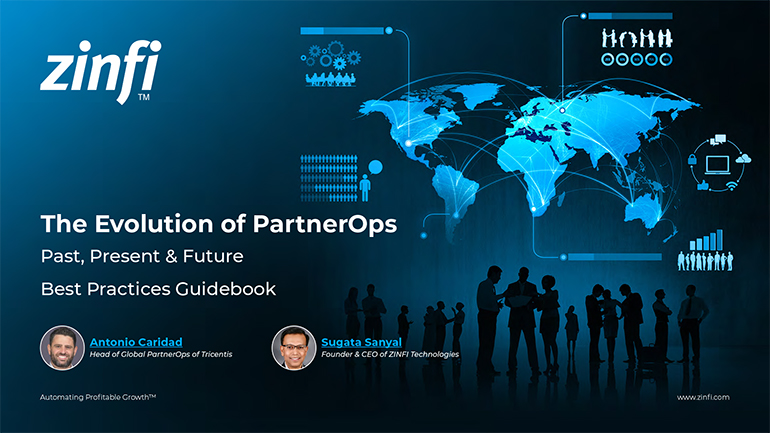Glossary - How to - PRM Software for Partner Management
How to Choose the Best PRM Software for Partner Management?
Introduction
Managing partnerships effectively is crucial for growth and sustainability in today’s competitive business landscape. Partner Relationship Management (PRM) software enables organizations to streamline partner onboarding, automate workflows, and improve collaboration. Choosing the best PRM software for partner management can significantly impact an organization’s ability to drive revenue and maintain strong relationships with channel partners.
Effective partner management requires tools that offer seamless integration, automation, and real-time analytics. Businesses that leverage PRM software can enhance their partner programs by improving communication, tracking performance metrics, and optimizing partner engagement. With the right PRM platform, companies can build a scalable ecosystem that fosters loyalty and growth.
Key Takeaways:
Understanding PRM Software Features:
It is essential to evaluate key features to select the best PRM software, including:
- Automated Partner Onboarding: A streamlined onboarding process ensures faster partner activation and reduces administrative burdens.
- Deal Registration & Management: Helps partners register deals and track opportunities efficiently.
- Marketing & Sales Enablement: Provides partners with co-branding tools, marketing materials, and sales playbooks.
- Performance Analytics & Reporting: Offers insights into partner contributions and engagement levels.
- Integration with CRM & Other Systems: Ensures seamless data flow between various business tools.
Benefits of PRM Software in Partner Management:
Investing in PRM software offers numerous advantages, such as:
- Enhanced Partner Engagement: Centralized portals facilitate better communication and resource access.
- Automated Workflows: Reduces manual efforts and speeds up processes like lead distribution and deal approvals.
- Improved Compliance & Security: Ensures adherence to partnership agreements and data protection standards.
- Scalability: Adapts to business growth by accommodating an increasing number of partners.
Evaluating the Best PRM Software Providers:
When assessing PRM vendors, consider the following factors:
- User Experience & Interface: An intuitive dashboard and easy navigation improve adoption rates.
- Customization & Scalability: Tailor the platform to your business needs and ensure it scales with growth.
- Customer Support & Training: Access to responsive support and training resources is crucial for successful implementation.
- Pricing & ROI: Weigh costs against potential benefits to determine overall value.
How PRM Software Improves Channel Partner Success:
PRM software plays a vital role in enhancing partner relationships by:
- Providing Personalized Partner Portals: Ensures that partners have access to relevant content and tools.
- Facilitating Lead Management: Assigns leads efficiently to track deal progress.
- Offering Incentive & Reward Programs: Motivates partners to perform better through commissions and bonuses.
- Enhancing Collaboration & Communication: Reduces silos and fosters a cooperative ecosystem.
Common Pitfalls to Avoid When Choosing PRM Software:
Avoid these mistakes to ensure the best PRM software selection:
- Ignoring Integration Capabilities: Ensure compatibility with existing CRM, ERP, and marketing automation tools.
- Overlooking User-Friendliness: Complex platforms may lead to low adoption rates.
- Neglecting Security & Compliance: Choose software that adheres to industry regulations.
- Not Considering Scalability: Invest in a solution that supports long-term business growth.
Summary of Key Takeaways:
Choosing the best PRM software for partner management requires careful consideration of essential features like onboarding automation, deal tracking, and marketing enablement. The right PRM solution enhances partner engagement, optimizes workflows, and ensures scalability. Evaluating software providers based on usability, integration, and ROI is crucial for making an informed decision. Avoiding common pitfalls such as ignoring security, overlooking user-friendliness, and failing to consider scalability will lead to a successful PRM implementation.
Key Examples:
- Automotive Manufacturing: PRM software helps manage dealership networks by automating sales tracking, training programs, and inventory management.
- Consumer Electronics: Manufacturers use PRM tools to distribute marketing collateral, manage warranty claims, and track partner performance.
- Energy Production: In the energy sector, PRM software aids in distributor partnerships, ensuring compliance with regulations and tracking project progress.
- Financial Services: Banks and financial institutions use PRM platforms to manage agent networks, ensure compliance, and provide sales enablement tools.
- Food & Beverage: PRM software facilitates supply chain partnerships by managing promotions, orders, and vendor relationships.
- Healthcare Services: Medical device companies and providers use PRM tools to manage distributor networks and ensure regulatory compliance.
- Information Technology: IT firms leverage PRM software to provide partner training, certification programs, and deal management tools.
- Pharmaceutical Development: Pharmaceutical companies use PRM solutions to collaborate with research partners, track regulatory compliance, and manage clinical trials.
- Retail Industry: Retailers utilize PRM platforms for franchise management, promotional campaigns, and loyalty programs.
- Telecommunications: Telecom companies deploy PRM software to manage reseller networks, distribute marketing assets, and track commission payouts.
Conclusion:
Selecting the best PRM software for partner management is critical for businesses seeking to optimize their partner programs. By evaluating key features, benefits, and vendor capabilities, organizations can implement a PRM solution that enhances partner collaboration, improves operational efficiency, and drives revenue growth. Industry-specific applications demonstrate the versatility of PRM software in various sectors, making it an essential tool for effective partner management.
Associated Keywords:
- PRM Software Comparison
- Partner Management Platform
- Best PRM Solutions for Businesses















